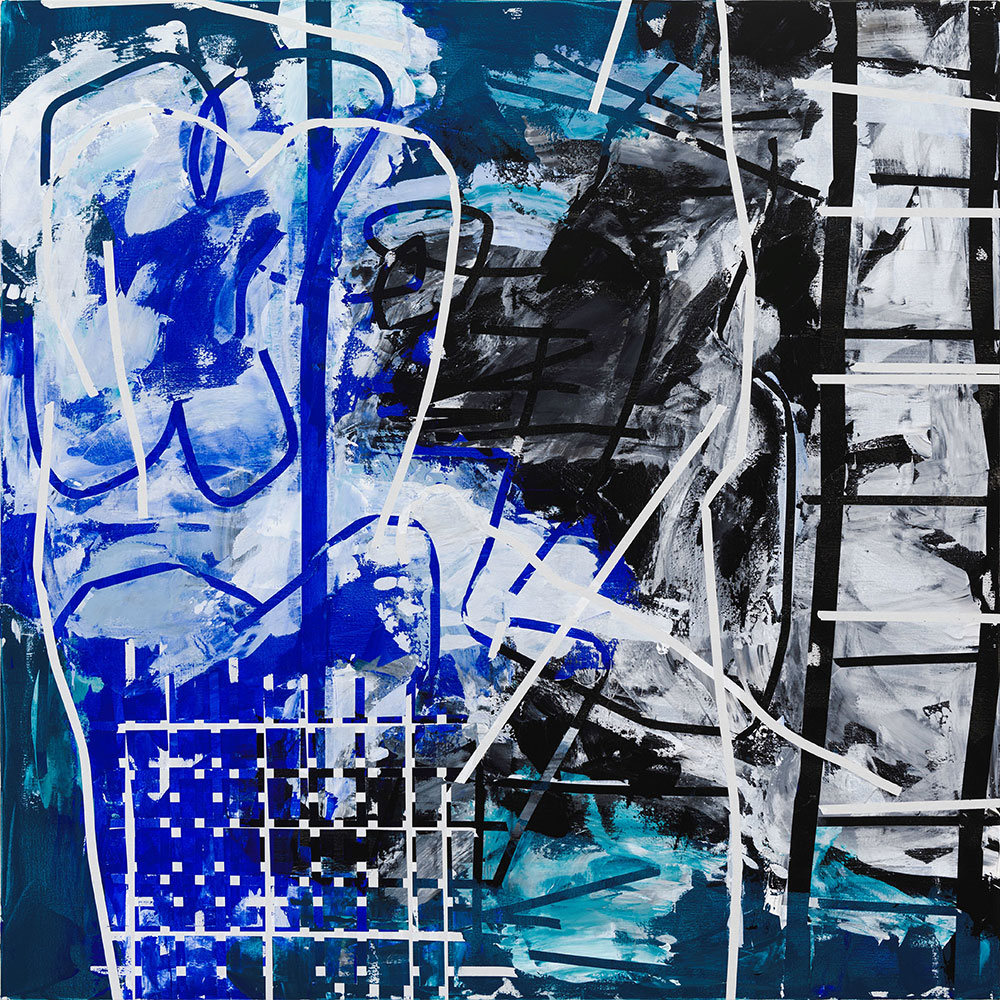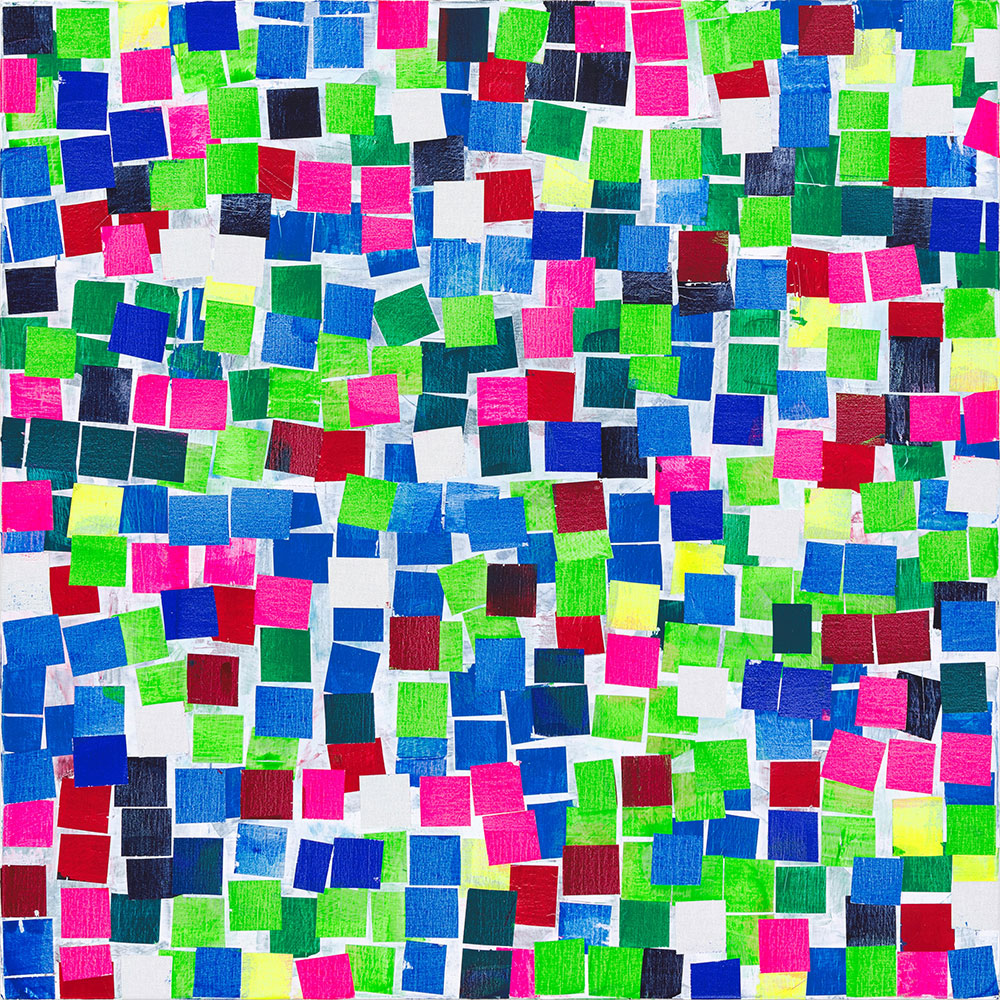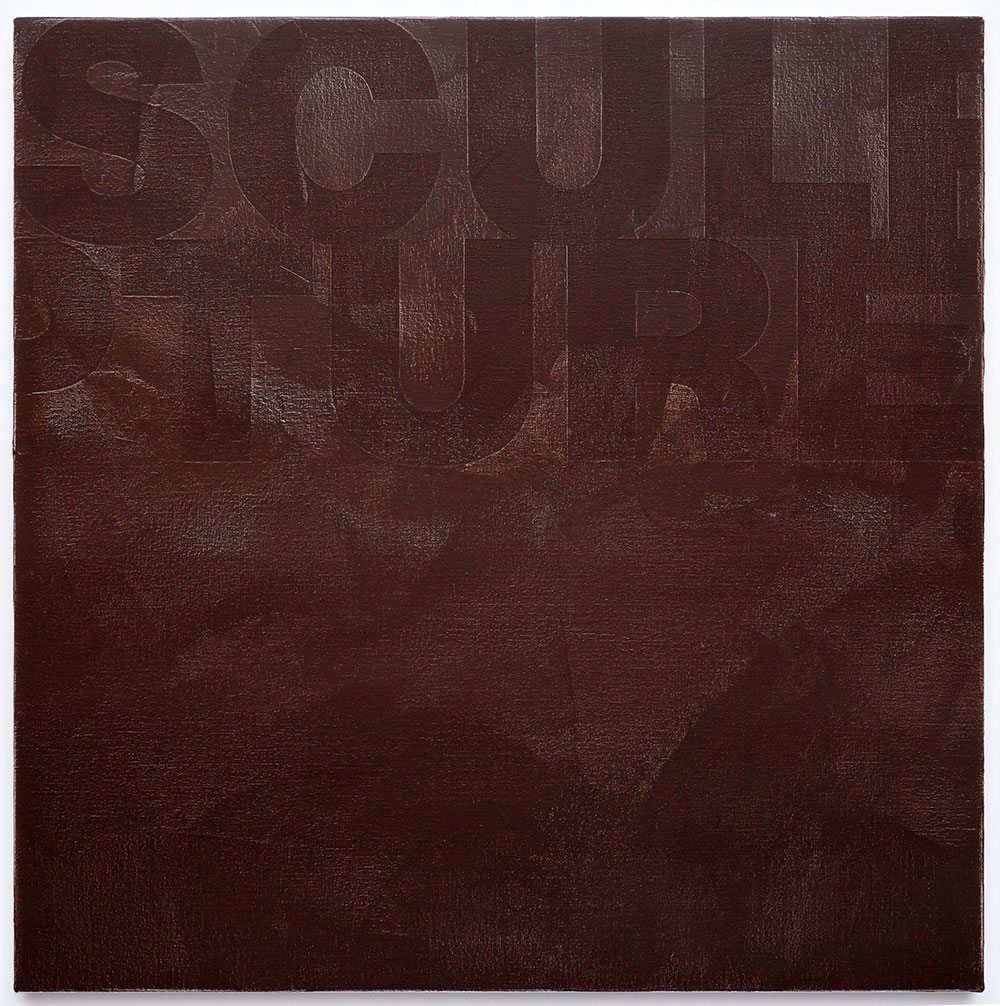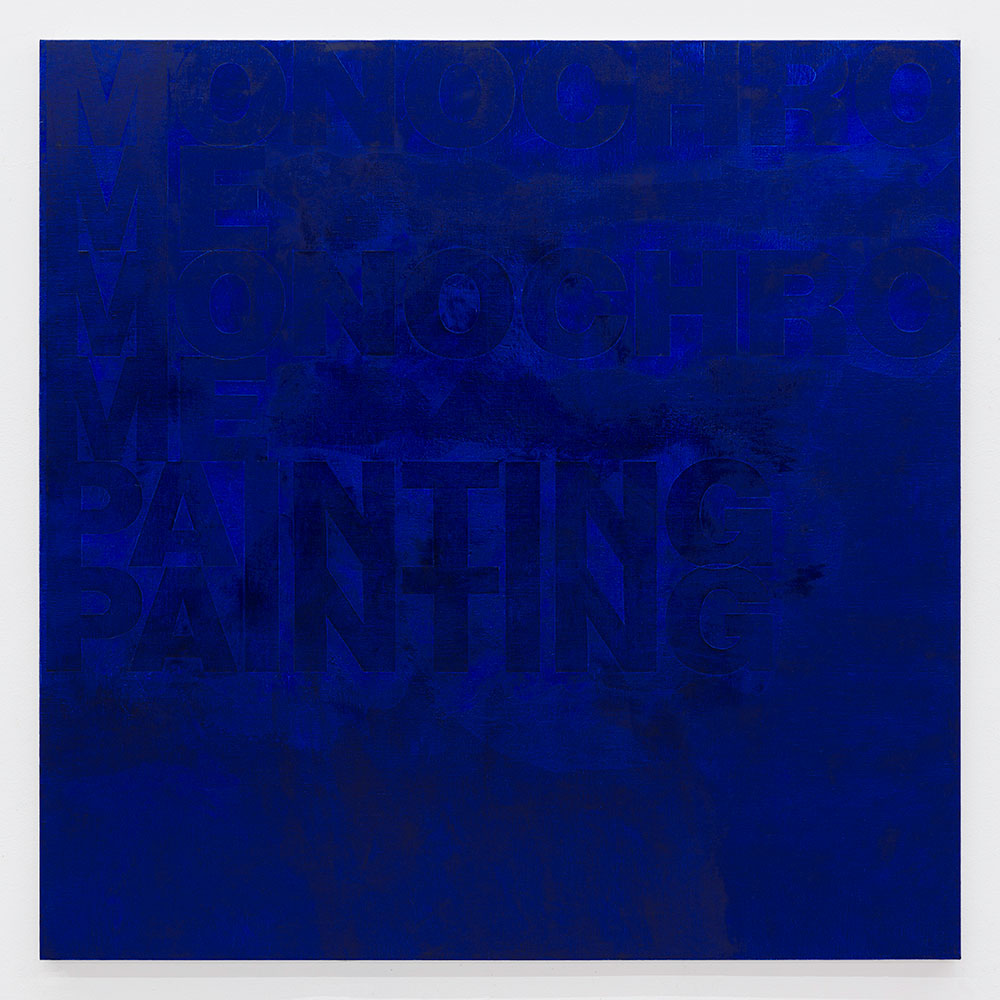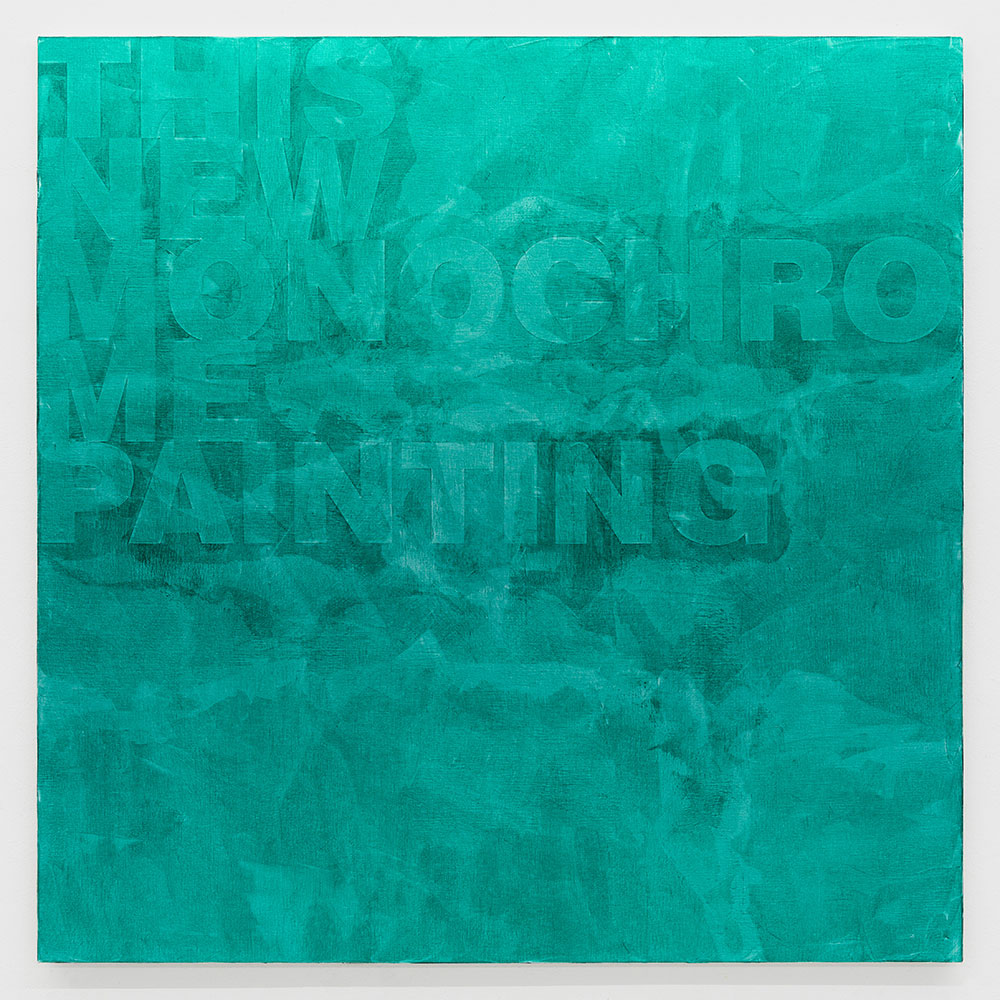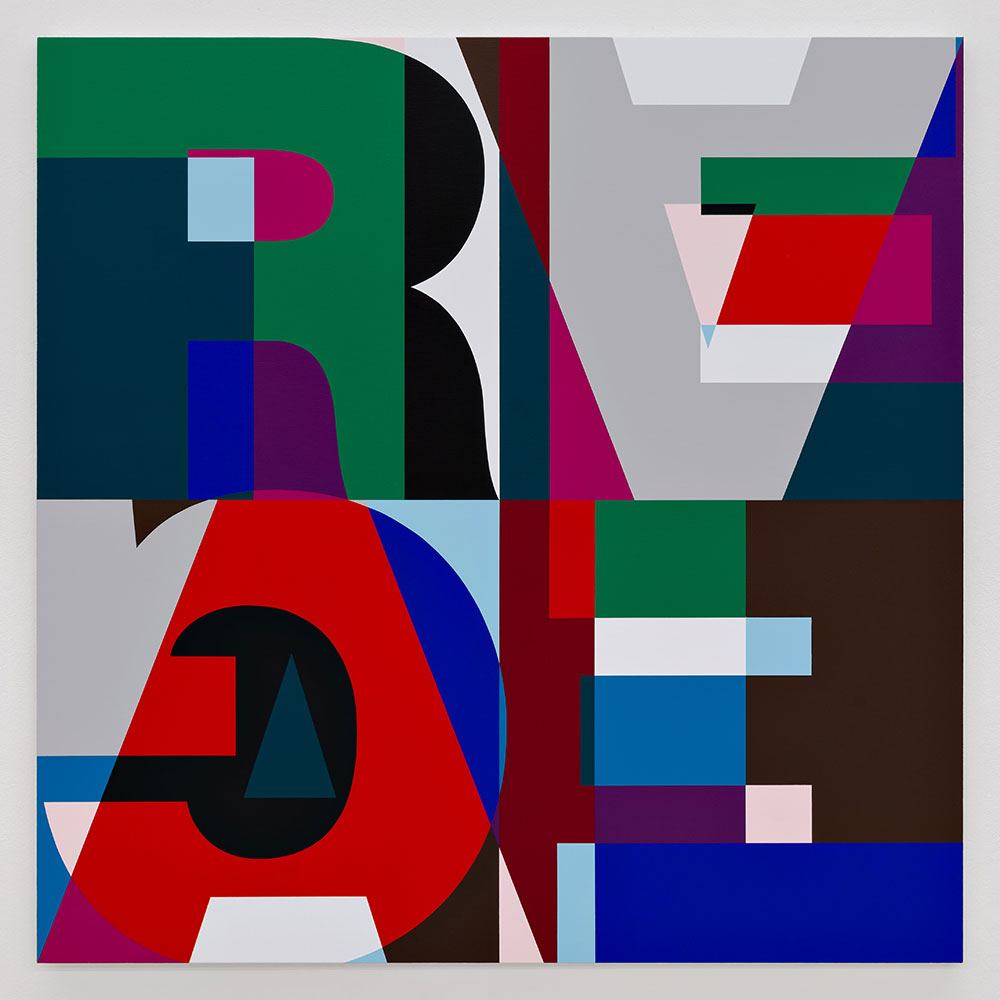ART-PRESENTATION: Heimo Zobernig
 Painting, along with sculpture, film, performance, and design, is a central component of the intermedia art of Heimo Zobernig. Since the beginning of his artistic practice in the early 1980s, the artist has built up a comprehensive painterly oeuvre, always based on his attempt to explore color like a “scientist”. Thus, in Zobernig’s work, painting has become a machine for the creation of insight. Characteristics of the artist’s method in this context are strategies of simplification, standardization, and systematization using predefined rules and the artistic appropriation of industrial norms and widespread samples (such as TV test patterns).
Painting, along with sculpture, film, performance, and design, is a central component of the intermedia art of Heimo Zobernig. Since the beginning of his artistic practice in the early 1980s, the artist has built up a comprehensive painterly oeuvre, always based on his attempt to explore color like a “scientist”. Thus, in Zobernig’s work, painting has become a machine for the creation of insight. Characteristics of the artist’s method in this context are strategies of simplification, standardization, and systematization using predefined rules and the artistic appropriation of industrial norms and widespread samples (such as TV test patterns).
By Efi Michalarou
Photo: Mumok Archive
After mumok’s presentation of the consistent and yet utter multifaceted development of Heimo Zobernig in a first retrospective show in winter 2002/2003, this exhibition place its emphasis on Zobernig’s extended concept of paintings with select recent groups of works. The artist designed the exhibition architecture himself. With it, Zobernig references the classical-modernist architecture of the Sonsbeek Pavilion, which the Dutch designer Gerrit Rietveld created for a sculpture presentation in Arnheim in 1955. Heimo Zobernig’s expanded concept of painting is already clearly visible in early works from the mid-1980s, when he produced both paintings with abstract geometric shapes and first cardboard sculptures coated with monochrome synthetic resin paint. For his object group the artist defined a five-part color palette of “uncolorful” colors. He called them “sculpture colors”: gray, black, white, brown, orange. This way, he demonstrated a hybrid painting practice, between two and three dimensions, which he later both radically and subtly expanded with his chessboard-patterned blankets around 2016. For his “striped pictures,” created from 1987 on, the artist defined a fixed palette of fifteen pure pigment colors, which he specified using the names of elementary colors: red, green, yellow, blue, brown, orange, violet, black, white, gray, ocher, purple, light green, light red, and light blue. Even in these early paintings, the ubiquity of technical images and the one-of-a-kind character of pain- ting draw together. In the mid-1990s, Zobernig again brought the principle of transfer into play by trans- posing so-called chroma key colors from video technology (bluescreen blue, video blue, video red, and video green) into the realm of painting. Although the various work phases generally hint at or bear reference to the avantgarde playbook and its tradi- tions (monochromes and grids, minimalism, color-field painting, gestural and geome- tric abstraction, or text art), contemporary culture and its technological visual media are also discernible as an important influence. Such ambivalences are a recurring motif in Zobernig’s art. His grid images, produced from 2000 onward, again make use of chroma key nettle textures as their medium, coated with white acrylic paint to create different checkered and gridlike structures. Along with the previous main motifs of monochromes and grids, the lasting impression a 2011 Pablo Picasso exhibition left on the artist also reveals a third motif in Zobernig’s work: the gestural. Art appears as a vast, contradictory field of research in Heimo Zobernig’s work—to which one must relate in a variety of ways. Art appears as both a demonstration item and the object of analysis. Early on, the artist described himself in this regard as a “historian” and “scientist“. In keeping with this image, Zobernig’s artistic investigations take place on almost all levels and are devoted to details as well as the greater whole. The artist forms his own analytical system and focuses on the interplay of aesthetics and society—asking under what conditions art is ready to emerge. “My aesthetic, my art, is the result of my work; it evolves when I question and knead content and style long enough to reach a valid form and don’t follow any theoretical models but think for myself”. Processes of artistic production and material aesthetics as well as the examination of display and architecture or the challenge of the working mechanisms of museums and galleries can all be found in Heimo Zobernig’s work. Even the catalogues’ graphic design is subject to this system and thus becomes an important part of Zobernig’s artistic practice. His own role as an artist appears like an attitude in motion that he constantly explores and develops.
Photo: Heimo Zobernig , Ohne Titel, 2014, Acrylic on canvas, 200 x 200 cm. © Bildrecht, Wien 2021
Info: Curator Karola Kraus, mumok (museum moderner kunst stiftung ludwig wien), Museumsplatz 1, Vienna, Austria, Duration: 19/6-17/10/2021, Days & Hours: Tue-Sun 10:00-18:00, www.mumok.at


